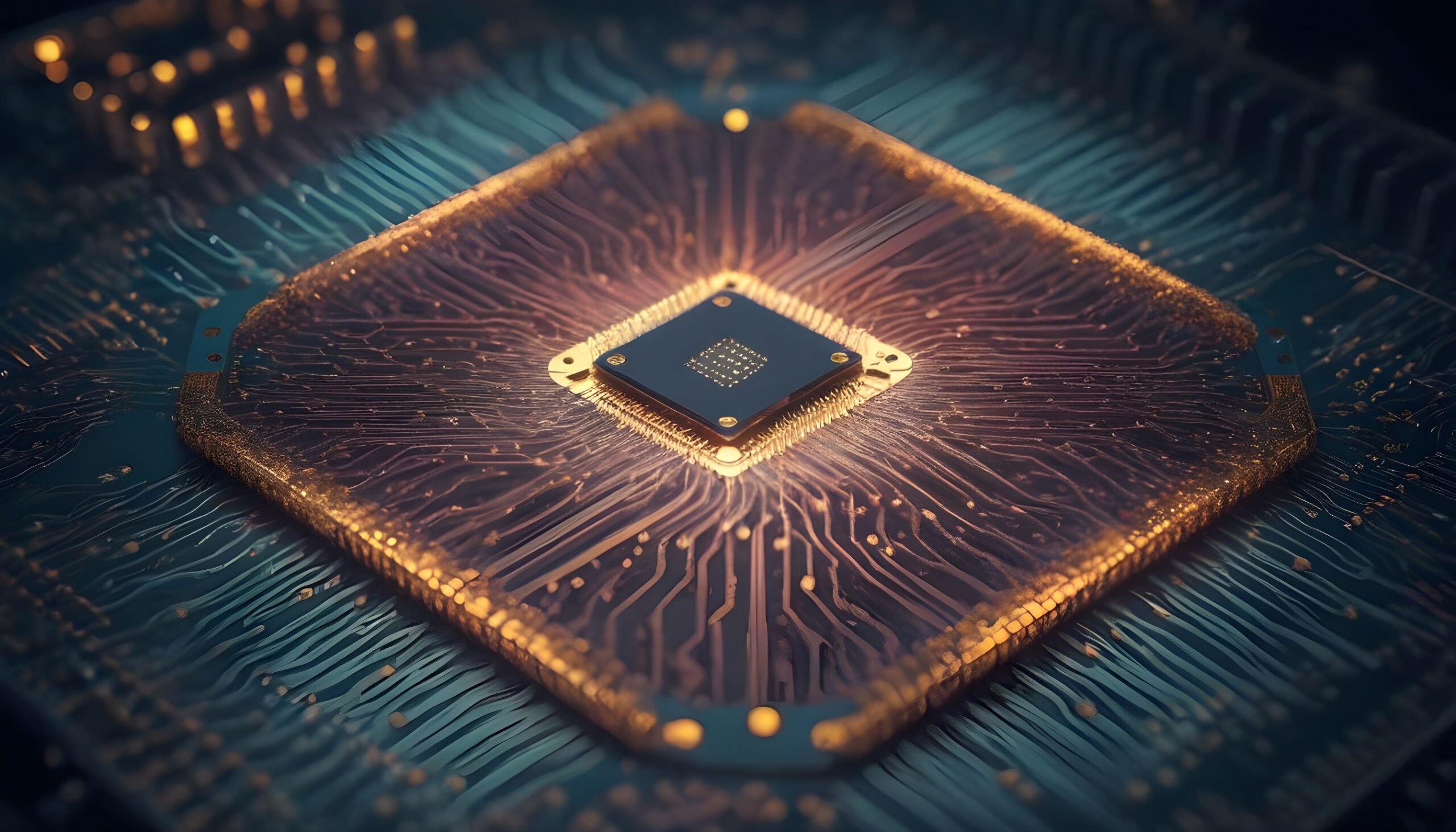Navigating the Quantum Maze: Challenges and Approaches in Quantum Error Correction
Quantum computing, with its promise of exponentially faster processing speeds, holds immense potential for revolutionizing industries ranging from cryptography to drug discovery. However, harnessing this potential hinges on overcoming a formidable obstacle: quantum error correction. In the inherently fragile quantum realm, errors induced by noise and decoherence threaten to derail computations. This article delves into the challenges of error correction in quantum hardware and explores various approaches to mitigate errors, including surface codes, topological codes, and fault-tolerant quantum computing.
The Challenge of Quantum Error Correction:
Quantum computing represents a paradigm shift in computational power, promising to revolutionize industries and scientific fields with its potential for exponentially faster processing speeds and the ability to tackle complex problems. At the heart of this promise lies the remarkable properties of quantum bits, or qubits. Unlike classical bits, which can only exist in states of 0 or 1, qubits can exist in superpositions of both states simultaneously and can be entangled with one another, enabling a vast increase in computational capacity.
However, this unique advantage also brings about a significant challenge: quantum error correction. Quantum systems are inherently delicate, susceptible to errors induced by interactions with the environment. These errors can manifest in various forms, including noise and decoherence, which lead to the loss of quantum information and degrade the accuracy of computations. Unlike classical errors that can be easily detected and corrected through redundancy and error-correcting codes, errors in quantum systems are more complex and require sophisticated techniques to mitigate.
The fundamental difference between classical and quantum error correction lies in the nature of quantum information itself. Classical bits are discrete and deterministic, allowing for straightforward error detection and correction methods. In contrast, quantum information is probabilistic and subject to the principles of superposition and entanglement. As a result, errors in quantum systems are not only more prevalent but also more challenging to identify and correct without disturbing the delicate quantum states.
One of the primary sources of errors in quantum systems is decoherence, which occurs when qubits interact with their surrounding environment. External factors such as thermal fluctuations, electromagnetic radiation, and imperfections in the control mechanisms can disrupt the coherence of qubits, leading to the loss of quantum information. Decoherence poses a significant obstacle to the scalability and reliability of quantum computers, as it limits the time during which quantum computations can be performed accurately.
In addition to decoherence, quantum systems are also susceptible to errors arising from imperfect operations and gate operations. Quantum gates, which manipulate the state of qubits to perform computations, are prone to errors due to imperfections in the hardware or inaccuracies in the control signals. These errors can accumulate over time, leading to the degradation of quantum states and compromising the integrity of computations.
To address the challenges of quantum error correction, researchers are exploring various approaches and techniques aimed at preserving qubit coherence and protecting quantum information from errors. One approach involves the development of quantum error correction codes, which encode quantum information in redundant states that can detect and correct errors without disturbing the underlying quantum states. These codes rely on principles such as syndrome measurement and fault tolerance to mitigate errors and ensure the reliability of quantum computations.
Another approach to quantum error correction involves the use of quantum fault-tolerant techniques, which aim to design quantum algorithms and hardware architectures that can tolerate errors and maintain computational performance even in the presence of noise and decoherence. These techniques include error-avoiding algorithms, fault-tolerant quantum gates, and quantum error correction protocols tailored to specific types of errors and quantum hardware.
Despite significant progress in the field of quantum error correction, many challenges remain to be addressed before quantum computers can achieve their full potential. Scaling up quantum systems to a sufficient number of qubits while maintaining low error rates, improving the fidelity of quantum operations, and developing robust error correction codes are among the key challenges facing the field. Nevertheless, researchers are optimistic about the prospects of overcoming these challenges and unlocking the transformative power of quantum computing in the near future.
Approaches to Mitigate Errors:
Quantum computing’s potential for exponential speedup and tackling complex problems hinges on overcoming the formidable challenge of quantum error correction. Various approaches have been developed to mitigate errors in quantum systems, each offering unique advantages and insights into addressing this critical issue.
Surface Codes represent one of the most promising avenues for quantum error correction. These codes rely on encoding quantum information within two-dimensional arrays of qubits, forming what is known as qubit grids. By measuring the parity checks of qubits within these grids, errors can be detected and corrected using sophisticated error-correction algorithms. Surface codes offer high error thresholds and scalability, making them attractive candidates for fault-tolerant quantum computing. Their ability to efficiently detect and correct errors while maintaining computational performance makes them a key focus of research in the field.
Topological Codes leverage the exotic properties of topological states of matter to protect quantum information from errors. These codes encode qubits in non-local degrees of freedom, providing inherent robustness against local errors. For instance, Majorana-based topological qubits exhibit topological protection against certain types of errors, offering promising avenues for fault-tolerant quantum computing. By exploiting the unique properties of topological states, researchers aim to develop error correction schemes that can withstand the challenges posed by noise and decoherence in quantum systems.
Fault-Tolerant Quantum Computing represents a comprehensive approach to achieving error resilience in quantum systems. It combines error-correcting codes with fault-tolerant quantum gates and error mitigation techniques to enable reliable quantum computations despite the presence of errors. Fault-tolerant quantum algorithms, such as the surface code-based fault-tolerant universal gate set, hold the key to realizing fault-tolerant quantum computing. By integrating robust error correction methods with fault-tolerant hardware designs, researchers aim to create quantum architectures capable of performing complex computations with high accuracy and reliability.
Mitigating errors in quantum systems is essential for unlocking the full potential of quantum computing. Surface codes, topological codes, and fault-tolerant quantum computing represent promising approaches to address this challenge, each offering unique advantages and insights into achieving error resilience in quantum systems. By advancing these approaches and developing new techniques for error correction, researchers aim to pave the way for practical and scalable quantum computing technologies that can revolutionize industries and solve problems beyond the capabilities of classical computers.
Challenges and Future Directions:
Quantum error correction, while promising, faces several challenges that must be addressed to realize the full potential of quantum computing. One such challenge is scaling up error correction schemes to accommodate large-scale quantum computations. As quantum systems grow in size and complexity, the need for robust error correction becomes increasingly critical. However, designing error correction codes that can effectively handle the exponentially growing number of qubits while maintaining computational efficiency is a formidable task.
Another challenge lies in implementing fault-tolerant quantum gates with high fidelity. Fault-tolerant gates are essential for performing error-corrected quantum computations reliably. However, achieving the necessary level of control and precision required for fault-tolerant operations poses significant engineering challenges. From minimizing gate errors to optimizing control mechanisms, researchers must overcome numerous technical hurdles to realize fault-tolerant quantum gates capable of sustaining error-corrected quantum computations.
Moreover, the overhead associated with error correction presents scalability challenges for quantum computing. Error correction often requires additional qubits and computational resources, increasing the overall complexity and resource requirements of quantum systems. Balancing the trade-off between error correction overhead and computational performance is essential for achieving practical and scalable quantum computing technologies.
Despite these challenges, the future of quantum error correction is promising. Interdisciplinary research spanning quantum information theory, condensed matter physics, and quantum engineering holds the key to overcoming these obstacles. Advanced error correction codes, tailored to the specific challenges of large-scale quantum systems, are being developed to improve error resilience and computational efficiency. Novel fault-tolerant quantum gate designs, informed by advances in quantum hardware and control theory, are poised to enhance the reliability and fidelity of error-corrected quantum computations.
Moreover, improved error mitigation techniques, such as error-avoiding algorithms and error suppression methods, are being explored to minimize the impact of errors on quantum computations. By leveraging insights from diverse fields and combining theoretical advancements with experimental innovations, researchers aim to propel quantum error correction into a mature field.
While quantum error correction faces significant challenges, interdisciplinary research and technological advancements offer promising avenues for overcoming these obstacles. By addressing issues such as scaling, fault tolerance, and overhead, researchers are laying the foundation for practical, fault-tolerant quantum computing. With continued progress and collaboration, the vision of error-corrected quantum computers capable of revolutionizing industries and solving complex problems may soon become a reality.
In the relentless pursuit of practical quantum computing, quantum error correction emerges as a cornerstone, essential for overcoming the inherent challenges posed by errors induced by noise and decoherence. As researchers delve deeper into the intricacies of quantum systems, error correction schemes such as surface codes, topological codes, and fault-tolerant quantum computing have emerged as promising avenues towards reliable quantum computations.
Surface codes represent a beacon of hope in the quest for effective error correction in quantum systems. By encoding quantum information within two-dimensional arrays of qubits, surface codes enable the detection and correction of errors through intricate error-correction algorithms. With their high error thresholds and scalability, surface codes offer a robust framework for mitigating errors and ensuring the integrity of quantum computations.
Similarly, topological codes harness the exotic properties of topological states of matter to protect quantum information from errors. By encoding qubits in non-local degrees of freedom, topological codes provide inherent resilience against local errors, offering promising avenues for fault-tolerant quantum computing. Majorana-based topological qubits, in particular, exhibit topological protection against certain types of errors, highlighting the potential of topological codes in realizing reliable quantum computations.
Furthermore, fault-tolerant quantum computing represents a holistic approach towards achieving error resilience in quantum systems. By integrating error-correcting codes with fault-tolerant quantum gates and error mitigation techniques, fault-tolerant quantum computing aims to enable reliable quantum computations despite the presence of errors. Advanced fault-tolerant quantum algorithms, such as the surface code-based fault-tolerant universal gate set, hold the promise of realizing fault-tolerant quantum computing on a practical scale.
As researchers continue to innovate and refine these error correction approaches, the vision of scalable, fault-tolerant quantum computing draws ever closer. With each advancement, the barriers to practical quantum computing are gradually being dismantled, paving the way for unprecedented computational power and transformative breakthroughs across diverse fields.
In conclusion, quantum error correction stands at the forefront of the quest for practical quantum computing. Through the development of robust error correction schemes such as surface codes, topological codes, and fault-tolerant quantum computing, researchers are laying the foundation for reliable quantum computations that hold the potential to revolutionize industries and solve complex problems beyond the reach of classical computers. As we embark on this journey towards the realization of scalable, fault-tolerant quantum computing, the future holds boundless possibilities for innovation and discovery.










More Stories
Securing the Cyberspace: DDoS Attacks and Botnets
Securing the Connected: Cybersecurity Strategies for IoT
Exploring the Advancements and Applications of Supercapacitor